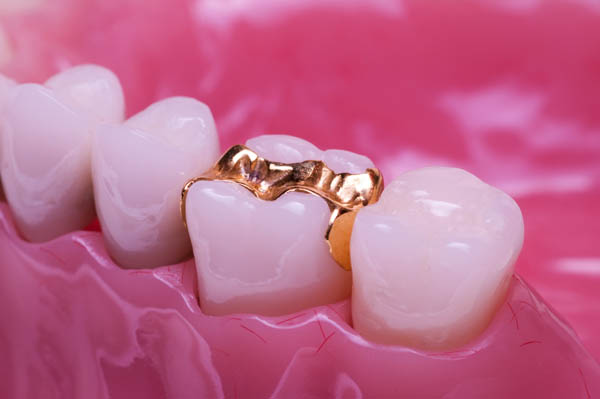Inlay Tooth Filling

When it comes to restoring teeth that have been damaged by decay or trauma, various dental procedures can be employed, each with its own set of advantages and specific use cases. Among these, the inlay tooth filling stands out as a highly effective method for rehabilitating teeth that are too damaged for a standard filling but not sufficiently compromised to require a full crown. This dental restoration technique is particularly valued for its ability to preserve more of the tooth’s natural structure, enhance its aesthetic appeal, and provide durable, long-lasting results.
Understanding Inlay Tooth Fillings
Inlay tooth fillings are custom-made restorations that are fabricated in a dental laboratory and then cemented into place by a dentist. Unlike traditional fillings, which are molded into place within the tooth during a dental visit, inlays are constructed outside of the mouth. This process allows for a more precise fit and higher-quality materials to be used, often resulting in restorations that are both more durable and visually pleasing.
Key Characteristics of Inlay Tooth Fillings
Precision and Fit: Because inlays are crafted in a laboratory, they can be made to fit perfectly into the prepared cavity of the tooth, ensuring a very tight and secure bond. This precision fitting helps in preventing bacteria from infiltrating the space between the inlay and the tooth, which can lead to further decay.
Material Variety: Inlays can be made from a variety of materials, including gold, ceramic, and composite resin. Each material has its own set of benefits; for instance, ceramic inlays are prized for their natural appearance and durability, while gold inlays are valued for their exceptional strength and longevity.
Aesthetic Appeal: The material used for inlays, especially ceramic and composite resins, can be matched very closely to the color of the surrounding tooth structure. This makes inlays nearly invisible in the mouth, preserving the natural appearance of the teeth.
Durability: Inlays are known for their long lifespan compared to traditional fillings. With proper care, they can last for 10 to 30 years or more, depending on the material and oral hygiene practices.
The Process of Getting an Inlay
The process of receiving an inlay typically involves two visits to the dentist. During the first visit, the dentist prepares the tooth by removing any decayed portions and shaping the tooth to receive the inlay. Impressions of the tooth are then taken and sent to a dental laboratory, where the inlay is custom-made. A temporary filling may be placed to protect the tooth until the inlay is ready.
In the second visit, the temporary filling is removed, and the custom-made inlay is cemented into place. The dentist ensures that the inlay fits perfectly and makes any necessary adjustments before cementing it into place.
Advantages Over Other Restorative Options
Inlay tooth fillings offer several advantages over other dental restorative options. They are more conservative than crowns, requiring less removal of tooth structure, yet they are more durable than traditional fillings. The use of advanced materials and laboratory fabrication processes also means that inlays can be made to be highly resistant to wear and tear, making them a good investment for long-term oral health.
Comparison with Onlays
While inlays are used to repair the chewing surface of a tooth within the cusps, onlays are used when the damage extends to one or more cusps of the tooth. Essentially, onlays cover the entire chewing surface of the tooth, including one or more cusps. Both inlays and onlays are considered more conservative alternatives to crowns and offer a more natural-looking and feeling restoration compared to full coverage crowns.
Considerations and Aftercare
As with any dental restoration, it’s crucial to practice good oral hygiene to extend the life of the inlay. Regular brushing, flossing, and dental check-ups are essential. Additionally, avoiding habits such as teeth grinding or clenching can help prevent unnecessary wear on the restoration. In cases where such habits are present, a dentist may recommend a mouth guard to protect both the inlay and the natural teeth.
Future Trends and Advances
The field of dental restorations is constantly evolving, with advancements in materials science and digital dentistry leading to more precise, durable, and aesthetically pleasing restorations. For instance, the use of CAD/CAM (Computer-Aided Design/Computer-Aided Manufacturing) technology allows for the fabrication of inlays and onlays during a single dental visit, potentially streamlining the process and enhancing the fit and function of the restoration.
Conclusion
Inlay tooth fillings represent a significant advancement in dental restoration techniques, offering patients a durable, natural-looking, and long-lasting solution for teeth damaged by decay or trauma. By understanding the process, benefits, and materials involved, individuals can make informed decisions about their dental care, opting for restorations that not only repair their teeth but also enhance their overall oral health and quality of life.
What are inlay tooth fillings made of?
+Inlay tooth fillings can be made from a variety of materials including gold, ceramic, and composite resin, each offering its own set of benefits and characteristics.
How long do inlay tooth fillings last?
+Inlays are known for their durability and can last for 10 to 30 years or more, depending on the material used and the patient’s oral hygiene practices.
What is the difference between an inlay and an onlay?
+An inlay is used to repair the chewing surface of a tooth within the cusps, while an onlay is used when the damage extends to one or more cusps of the tooth, requiring coverage of the entire chewing surface.
